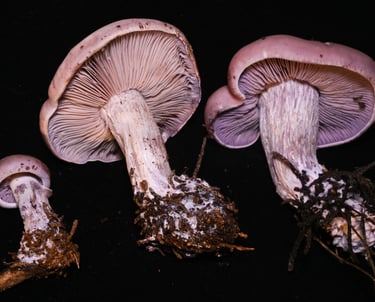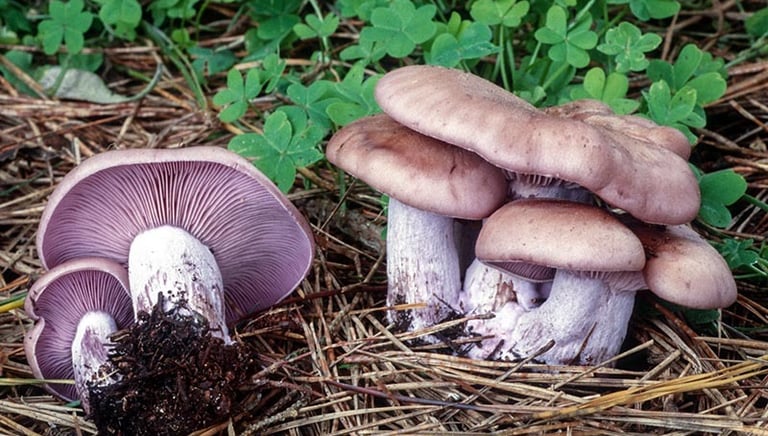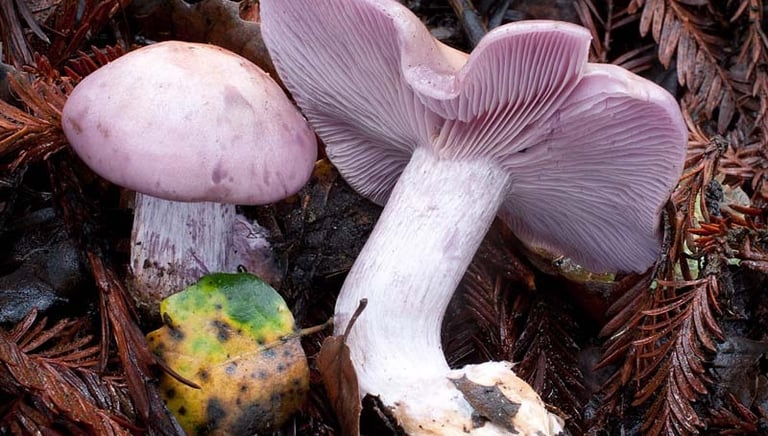Clitocybe Dealtata


Image By Alan Rockefelle
Potential lookalikes for Clitocybe nuda include:
1. Cortinarius species: Several species of Cortinarius can resemble Clitocybe nuda. These mushrooms typically have rusty brown spore prints and a cobweb-like veil (cortina) that covers the gills when young.
2. Tricholoma species: Some species of Tricholoma, such as Tricholoma terreum, can resemble Clitocybe nuda. These mushrooms typically have brownish-gray caps and stems and white gills.
3. Lepista irina: This mushroom, also known as the blue-foot, is a close relative of Clitocybe nuda and is often mistaken for it. It has a similar bluish-lilac cap and stem, but the cap is typically more convex and the stem is often bluer. The gills are also slightly more widely spaced than in Clitocybe nuda.
Description
1. Cap: The cap of Clitocybe nuda is typically 5-15 cm in diameter, with a convex shape when young that flattens out as it matures. It is usually a bluish-lilac color, but can also be pinkish-lilac or tan. The cap surface is smooth and dry, and the edge is usually wavy.
2. Gills: The gills of Clitocybe nuda are attached to the stem and are light purple when young, becoming pinkish-brown with age. They are relatively widely spaced and have a smooth edge.
3. Stem: The stem of Clitocybe nuda is typically 5-15 cm tall and 1-2 cm thick. It is usually the same color as the cap or slightly lighter and has a smooth surface.
4. Spores: The spores of Clitocybe nuda are elliptical or almond-shaped and measure 5-7 x 3-4 µm. They are white or cream-colored.
5. Habitat: Clitocybe nuda is typically found growing on the ground in deciduous or mixed forests, especially near oak, beech, or birch trees. It often fruits in the fall after the first few frosts.









